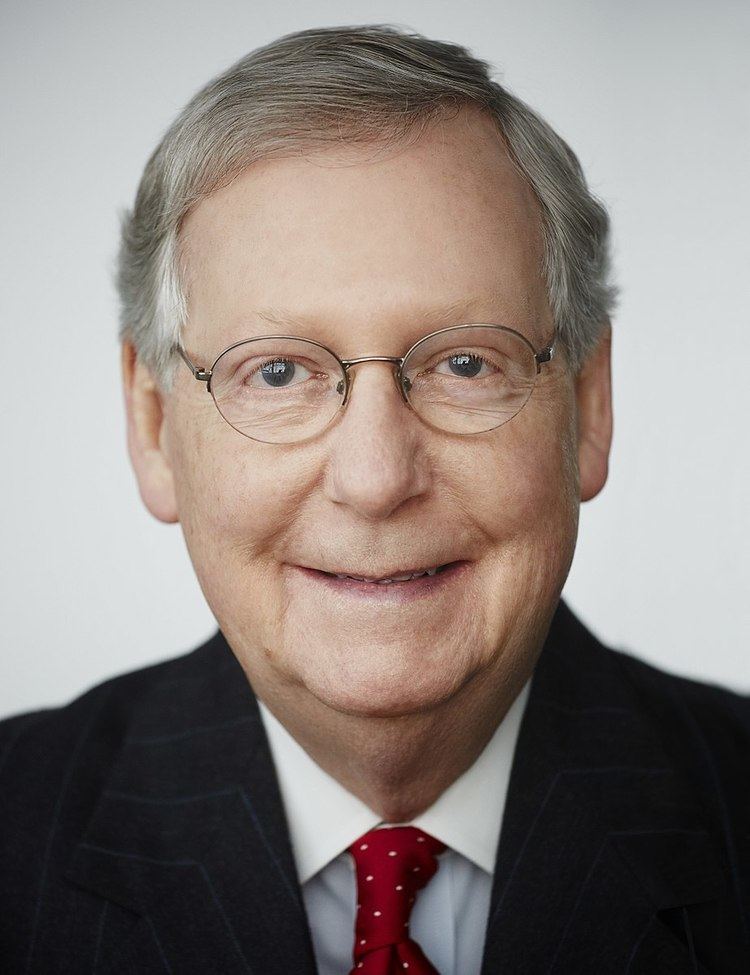 | ||
The Senate Majority and Minority Leaders are two United States Senators and members of the party leadership of the United States Senate. These leaders serve as the chief Senate spokespeople for the political parties respectively holding the majority and the minority in the United States Senate, and manage and schedule the legislative and executive business of the Senate. They are elected to their positions in the Senate by their respective party caucuses, the Senate Democratic Caucus and the Senate Republican Conference.
Contents
By rule, the Presiding Officer gives the Majority Leader priority in obtaining recognition to speak on the floor of the Senate. The Majority Leader customarily serves as the chief representative of their party in Senate, and sometimes even in all of Congress if the House of Representatives and thus the office of Speaker of the House is controlled by the opposition party.
The Assistant Majority and Minority Leaders of the United States Senate (commonly called Senate Majority and Minority Whips) are the second-ranking members of each party's leadership. The main function of the Majority and Minority Whips is to gather votes on major issues. Because they are the second ranking member of the Senate, if there is no floor leader present, the whip may become acting floor leader. Before 1969, the official titles were Majority Whip and Minority Whip.
Current floor leaders
The Senate is currently composed of 52 Republicans, 46 Democrats, and 2 independents, both of whom caucus with the Democrats.
The current leaders are Republican Majority Leader Mitch McConnell of Kentucky and Democratic Minority Leader Chuck Schumer of New York. The current Assistant Majority Leader is Republican John Cornyn of Texas. The current Assistant Minority Leader is Democrat Dick Durbin of Illinois.
History
The Democrats began the practice of electing floor leaders in 1920 while they were in the minority. John W. Kern was a Democratic Senator from Indiana. While the title was not official, he is considered to be the first Senate party leader from 1913 through 1917 (and in turn, the first Senate Democratic Leader), while serving concurrently as Chairman of the Senate Democratic Caucus. In 1925 the majority (at the time) Republicans also adopted this language when Charles Curtis became the first (official) Majority Leader, although his immediate predecessor Henry Cabot Lodge is considered the first (unofficial) Senate Majority Leader.
The Constitution designates the Vice President of the United States as President of the United States Senate. The Constitution also calls for a President pro tempore to serve as the leader of the body when the President of the Senate (the Vice President) is absent. In practice, neither the Vice President nor the President pro tempore—customarily the most senior (longest-serving) Senator in the majority party—actually presides over the Senate on a daily basis; that task is given to junior Senators of the majority party. Since the Vice President may be of a different party than the majority and is not a member subject to discipline, the rules of procedure of the Senate give the presiding officer very little power and none beyond the presiding role. For these reasons, it is the Majority Leader who, in practice, manages the Senate. This is in contrast to the House of Representatives where the elected Speaker of the House has a great deal of discretionary power and generally presides over votes on bills.
List of party leaders
The Democratic Party first selected a leader in 1920. The Republican Party first formally designated a leader in 1925.
